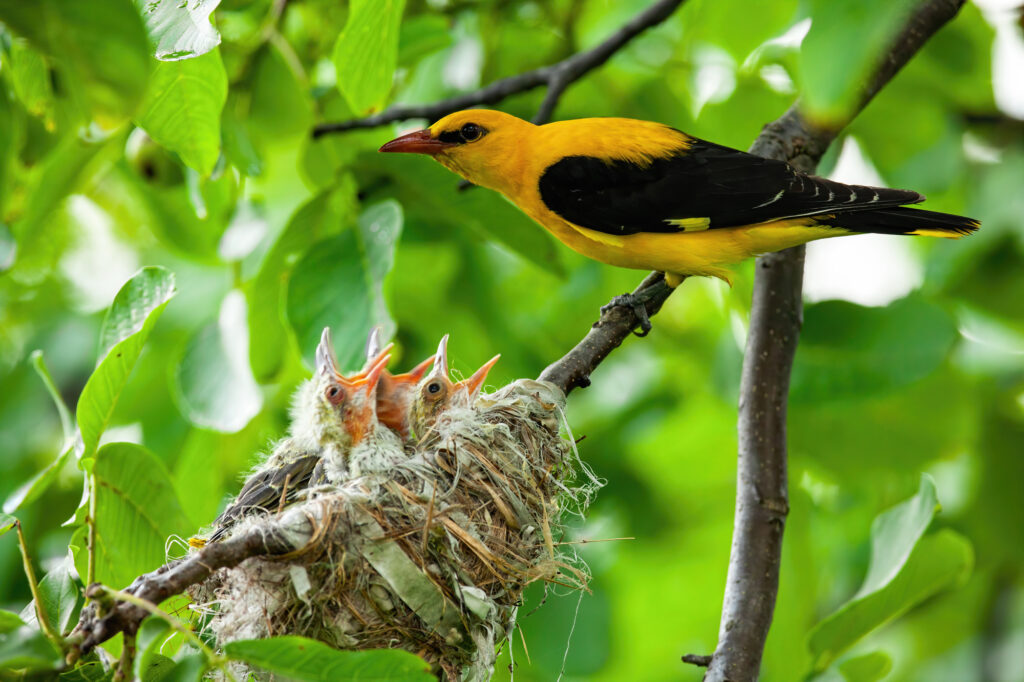Orioles are beloved backyard birds. But learning to identify them might pose a challenge if you are new to birdwatching since there are many birds that, superficially, look similar to the common oriole species you might see.
Let’s take a look at 12 birds that look like orioles…
What Are Orioles?
New World orioles are a group of birds in the genus Icterus of the blackbird family. There are also orioles in the old world, though these are unrelated.
The males of this group are typically orange or yellow with white markings, and the females are typically somewhat duller in hue. These birds are generally slender, with long tails and pointed bills.
There are 33 species within this genus, nine of which can be seen in parts of the United States.
Identifying Orioles
Remember when trying to identify orioles that the different species look different and that the male and female orioles can look strikingly different too.
We can illustrate this by looking at some of the oriole species in the US:
Baltimore Orioles
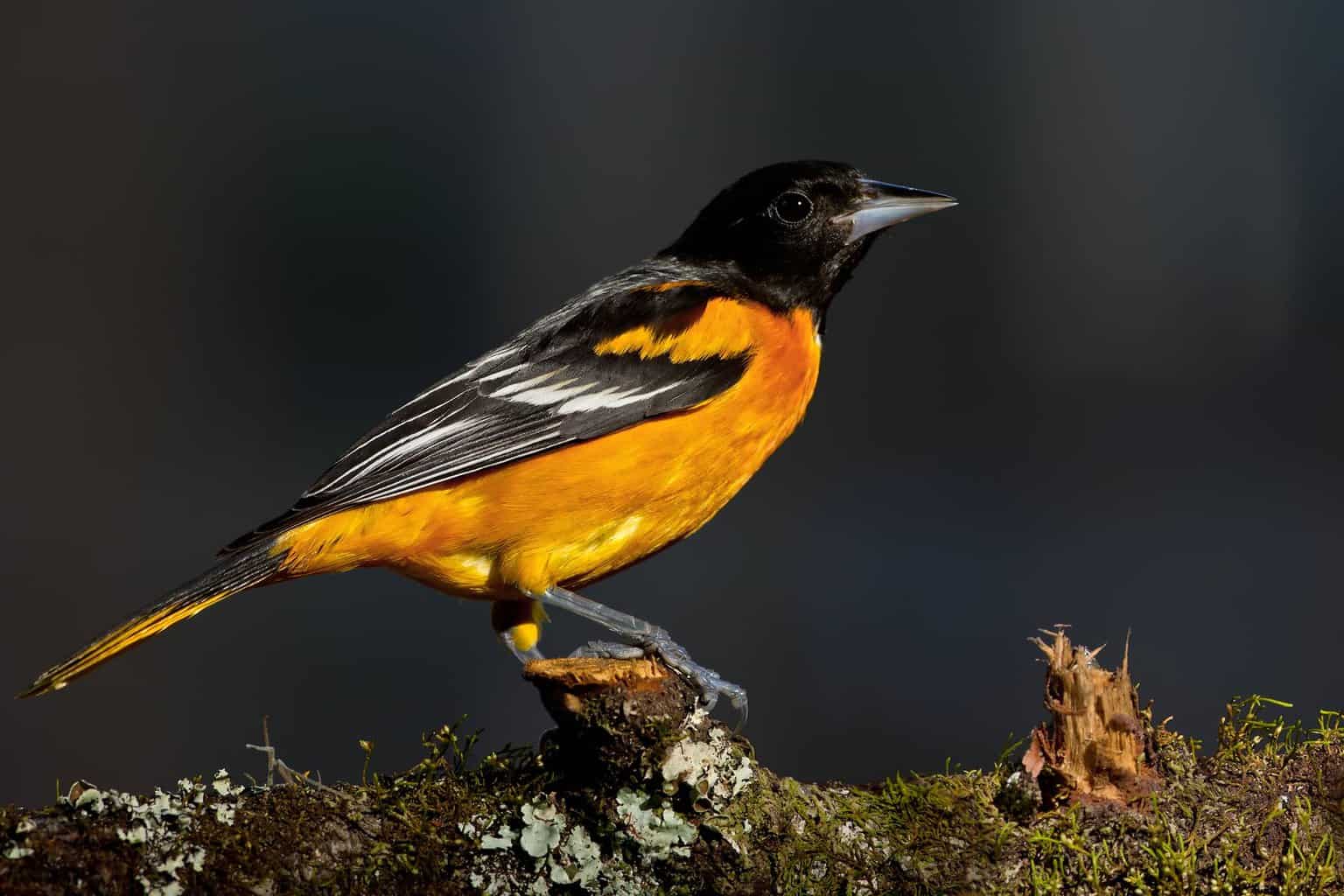
- Length: 6.7-7.5 in (17-19 cm)
- Weight: 1.1-1.4 oz (30-40 g)
- Wingspan: 9.1-11.8 in (23-30 cm)
The males are bright orange and black, with black wings with white wing bars. The adult females have yellow undersides and heads, brownish-yellow backs, and gray-brown wings.
Orchard Orioles
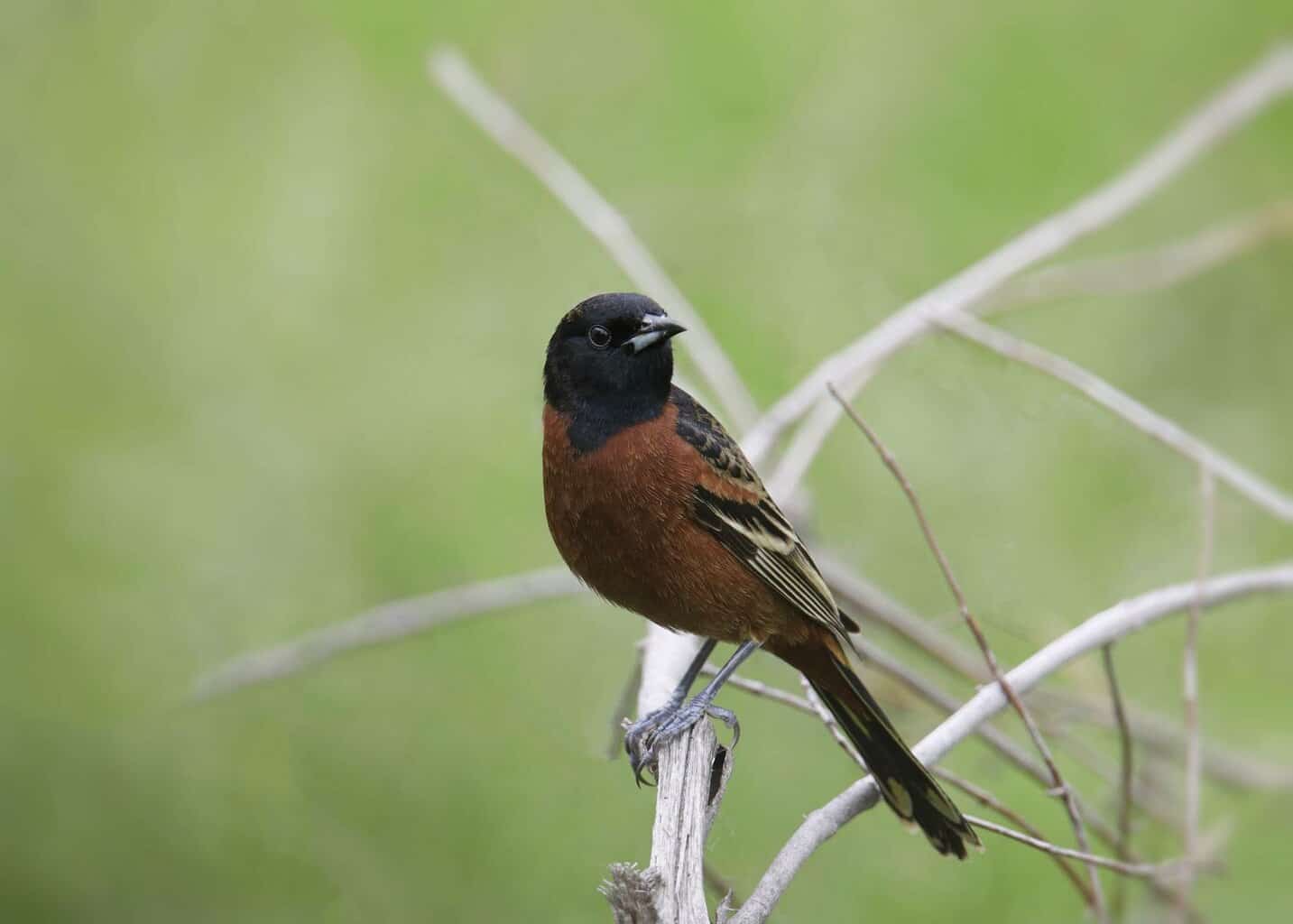
- Length: 5.9-7.1 in (15-18 cm)
- Weight: 0.6-1.0 oz (16-28 g)
- Wingspan: 9.8 in (25 cm)
The adult males are reddish underneath, with blackheads and backs. The females are a greenish yellow all over, darker on the back and paler underneath, with darker wings and white wing bars.
Bullock’s Orioles
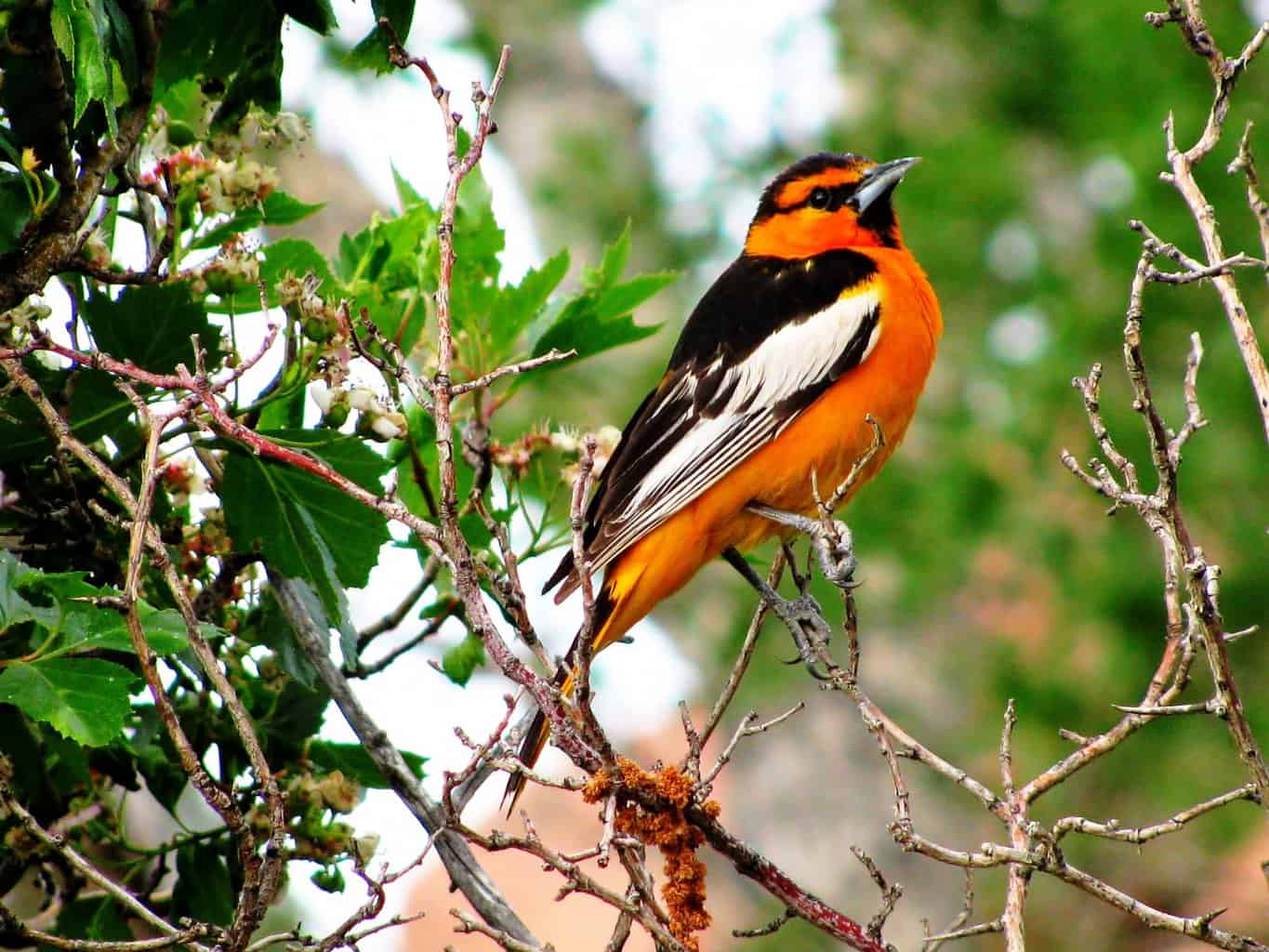
- Length: 6.7-7.5 in (17-19 cm)
- Weight: 1.0-1.5 oz (29-43 g)
- Wingspan: 12.2 in (31 cm)
The males have bright orange bodies, black and white wings, and black markings on their heads. The females have gray backs and yellowish heads, tails, and chests.
Scott’s Orioles
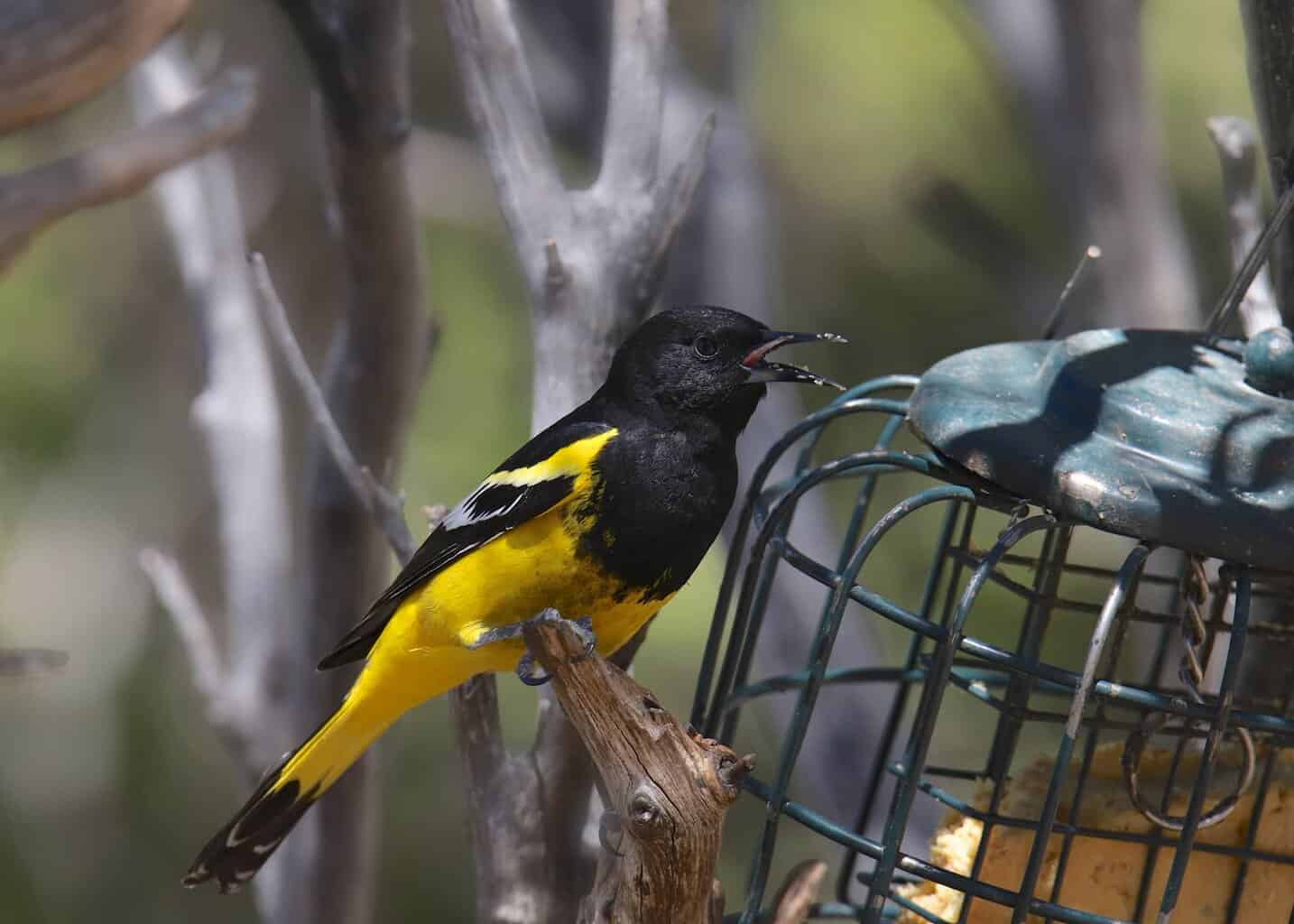
- Length: 9.1 in (23 cm)
- Weight: 1.1-1.4 oz (32-41 g)
- Wingspan: 12.6 in (32 cm)
The males have black heads and backs and bright yellow undersides. The females have olive-brown backs and paler yellow bellies.
Hooded Orioles
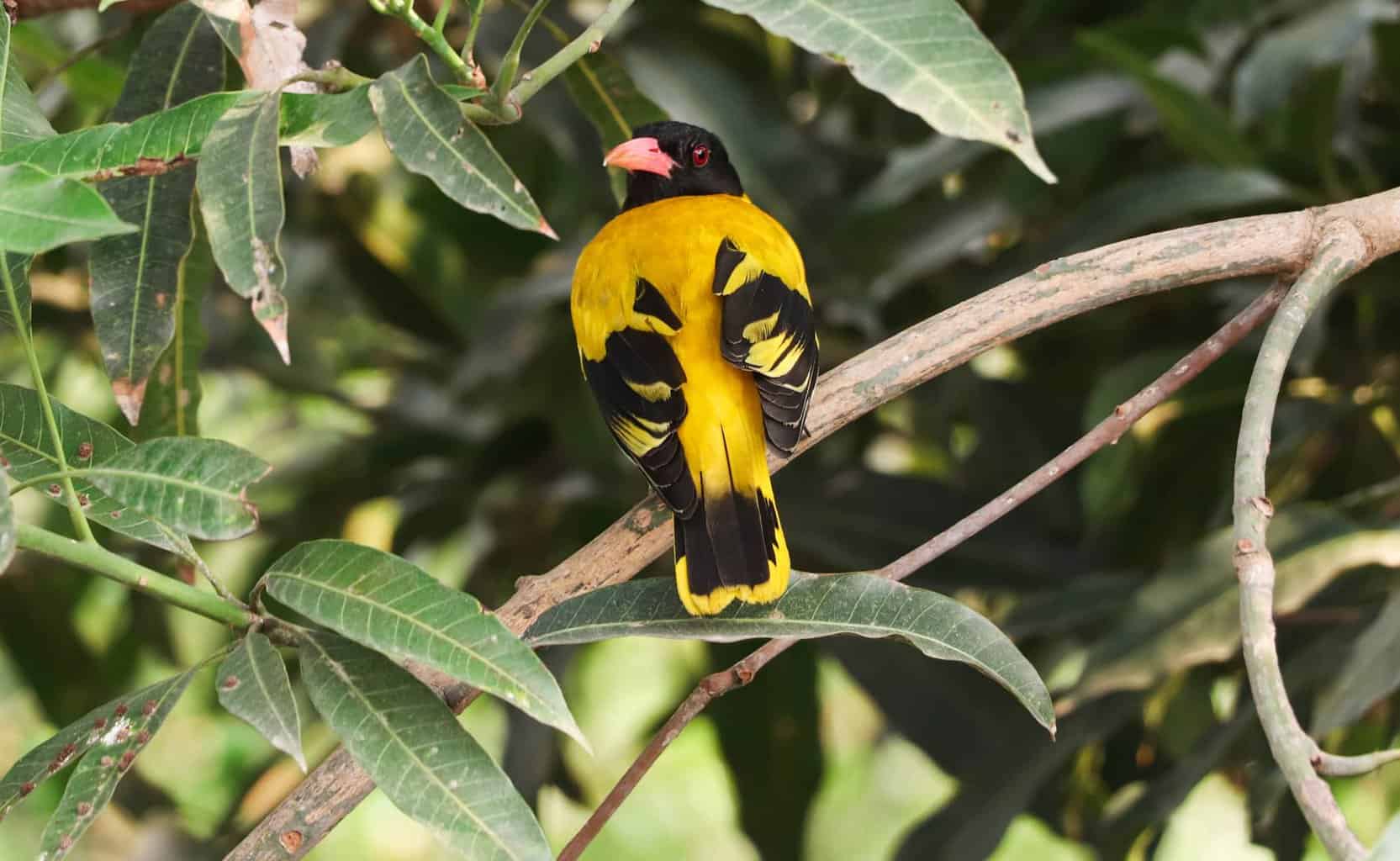
- Length: 7.1-7.9 in (18-20 cm)
- Weight: 0.8 oz (24 g)
- Wingspan: 9.1-11.0 in (23-28 cm)
The males are bright yellow or orange, with black backs, throats, and face markings. The females and immature birds are more yellow, with grayish coloration on their wings. They do not have face markings like the males.
As you can tell from the above, the males are typically much easier to identify correctly than the females of these species – as is the case with many birds.
But as you learn more about the different birds that visit and might visit your garden, you will begin to find identification much easier and, in most cases, can tell orioles and other birds apart.
Birds That Look Like Orioles
Of course, since different orioles differ in appearance, the birds resembling each one will also differ. But if you see yellows, golds, or orange hues, you might often think a bird is an oriole when it is not related.
Here are some birds that might be mistaken for orioles without looking more closely:
American Goldfinch

- Length: 4.3-5.1 in (11-13 cm)
- Weight: 0.4-0.7 oz (11-20 g)
- Wingspan: 7.5-8.7 in (19-22 cm)
This bird is found across the US and is the state bird in New Jersey, Iowa, and Washington. Spring males are brilliant yellow and shiny black with a bit of white.
Females and all winter birds are dull but identifiable by their conical bills; pointed, notched tails; wing bars; and lack of streakiness.
American Redstart
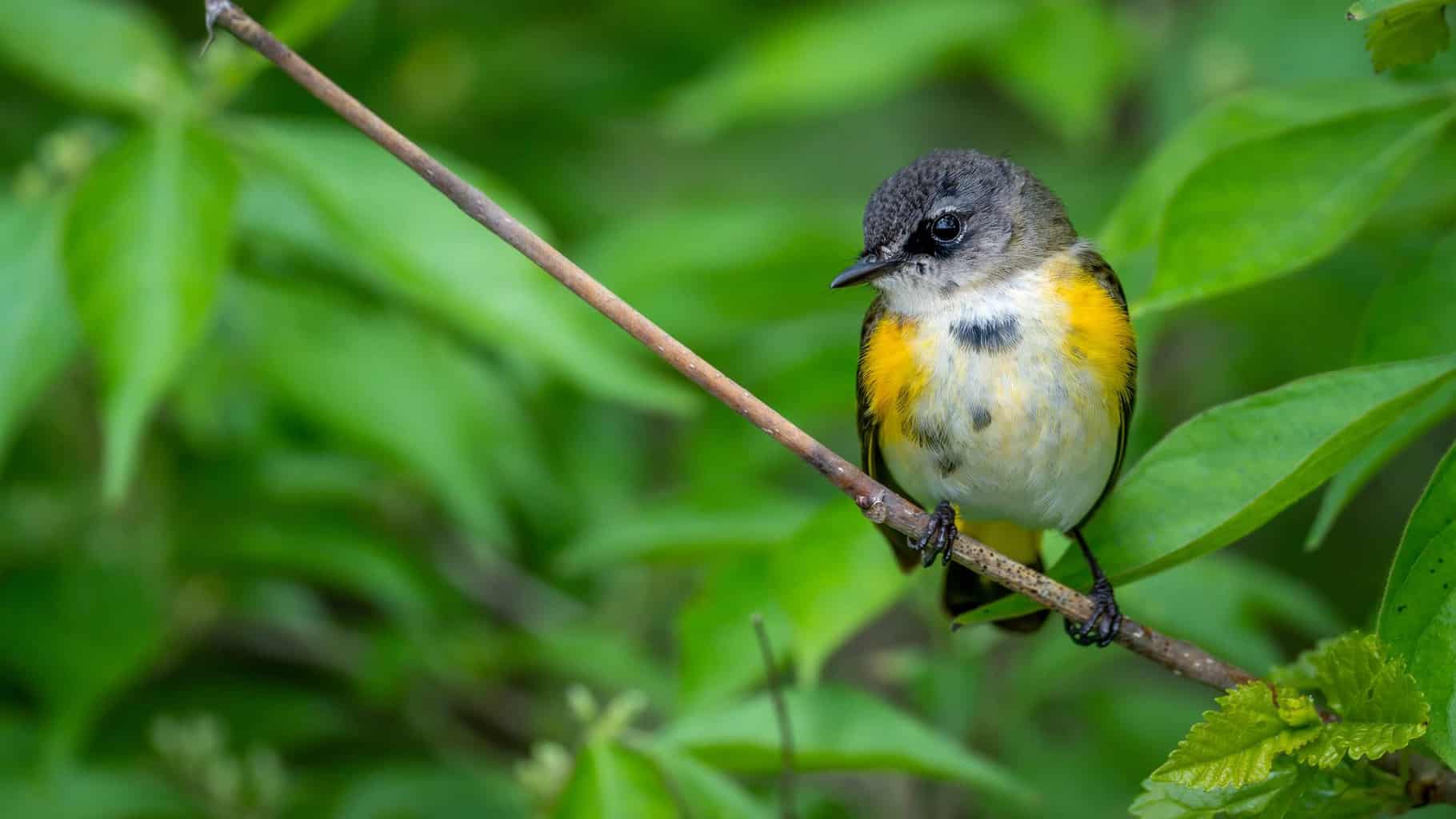
- Length: 4.3-5.1 in (11-13 cm)
- Weight: 0.2-0.3 oz (6-9 g)
- Wingspan: 6.3-7.5 in (16-19 cm)
This lively warbler is also seen across much of the US, except the west coast. The male is coal-black with bright orange patches on its sides, wings, and tail. Females and juveniles have yellow patterns on a gray background.
American Robin

- Length: 7.9-11.0 in (20-28 cm)
- Weight: 2.7-3.0 oz (77-85 g)
- Wingspan: 12.2-15.8 in (31-40 cm)
Orioles that might be mistaken for robins typically have blackheads/backs, while robins are far grayer. Orioles also have silver-black beaks, while robins have yellow bills, which can be black-tipped depending on the season.
These are also typically a little larger than an oriole.
Barn Swallow
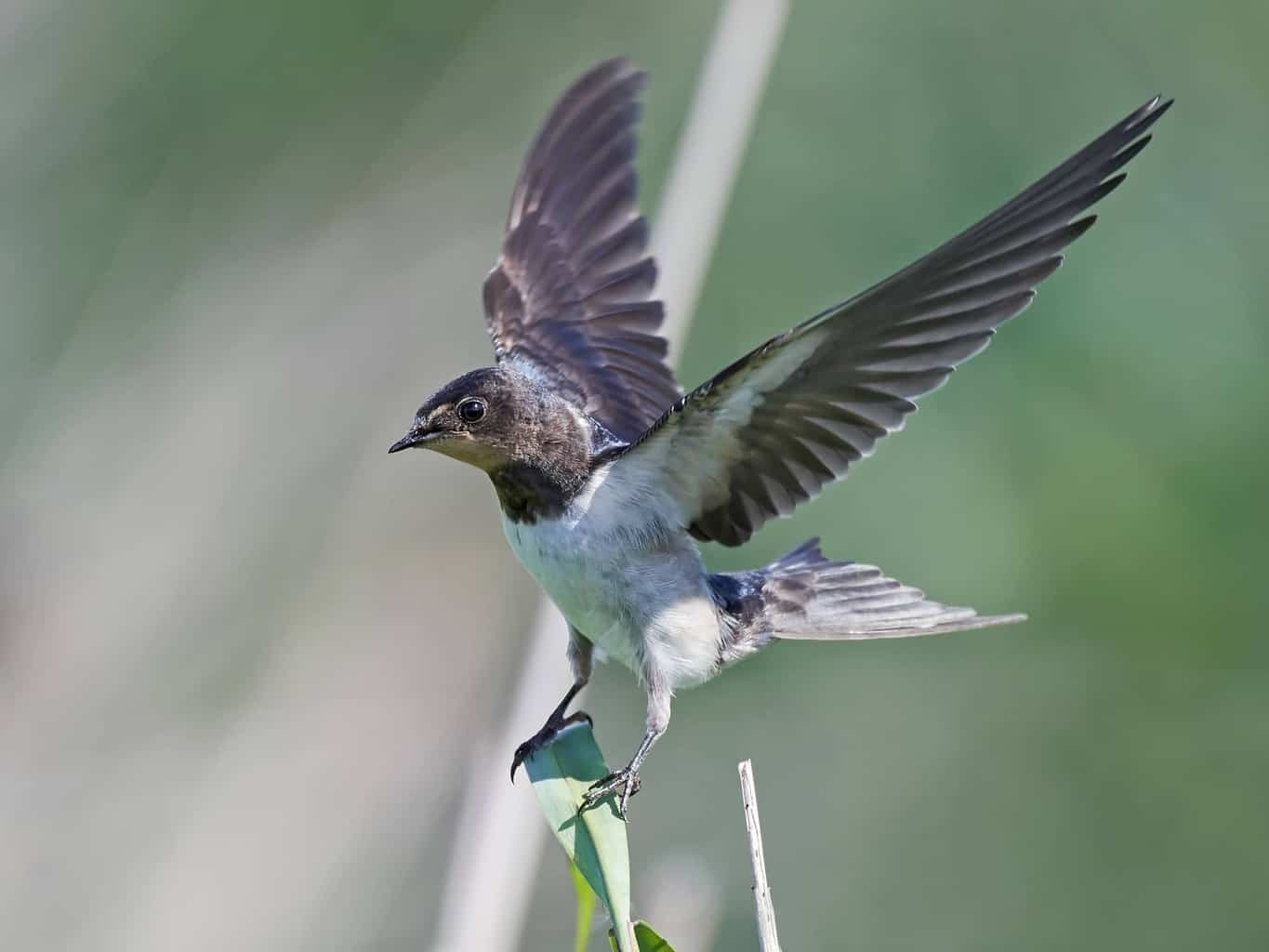
- Length: 5.9-7.5 in (15-19 cm)
- Weight: 0.6-0.7 oz (17-20 g)
- Wingspan: 11.4-12.6 in (29-32 cm)
If you look properly, you will see that barn swallows have cobalt blue backs. But their tawny orange bellies and similar size may confuse you, so they might be mistaken for an oriole on occasion.
The forked tail of this bird sets it apart from other swallows and species.
Blackburnian Warbler (and Other Warblers)
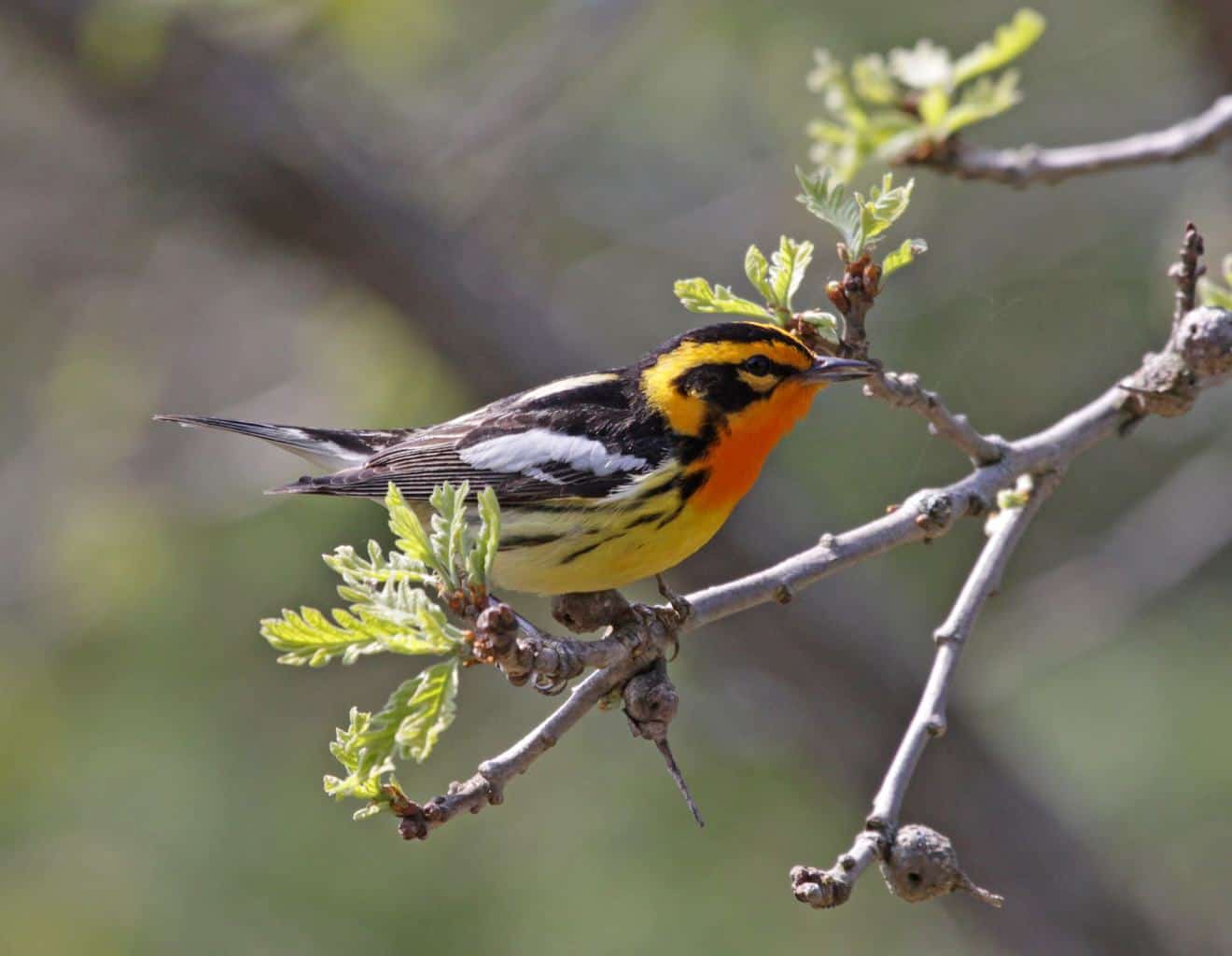
- Length: 4.3-4.7 in (11-12 cm)
- Weight: 0.3-0.4 oz (8.9-12.6 g)
- Wingspan: 7.9-9.1 in (20-23 cm)
Blackburnian warblers are one of many warbler species with yellow/orange coloration that might lead someone to confuse them with orioles.
And while they have similar coloration in places, there are differences in appearance once you look at these birds more closely. Warblers are also smaller in size.
Black-headed Grosbeak
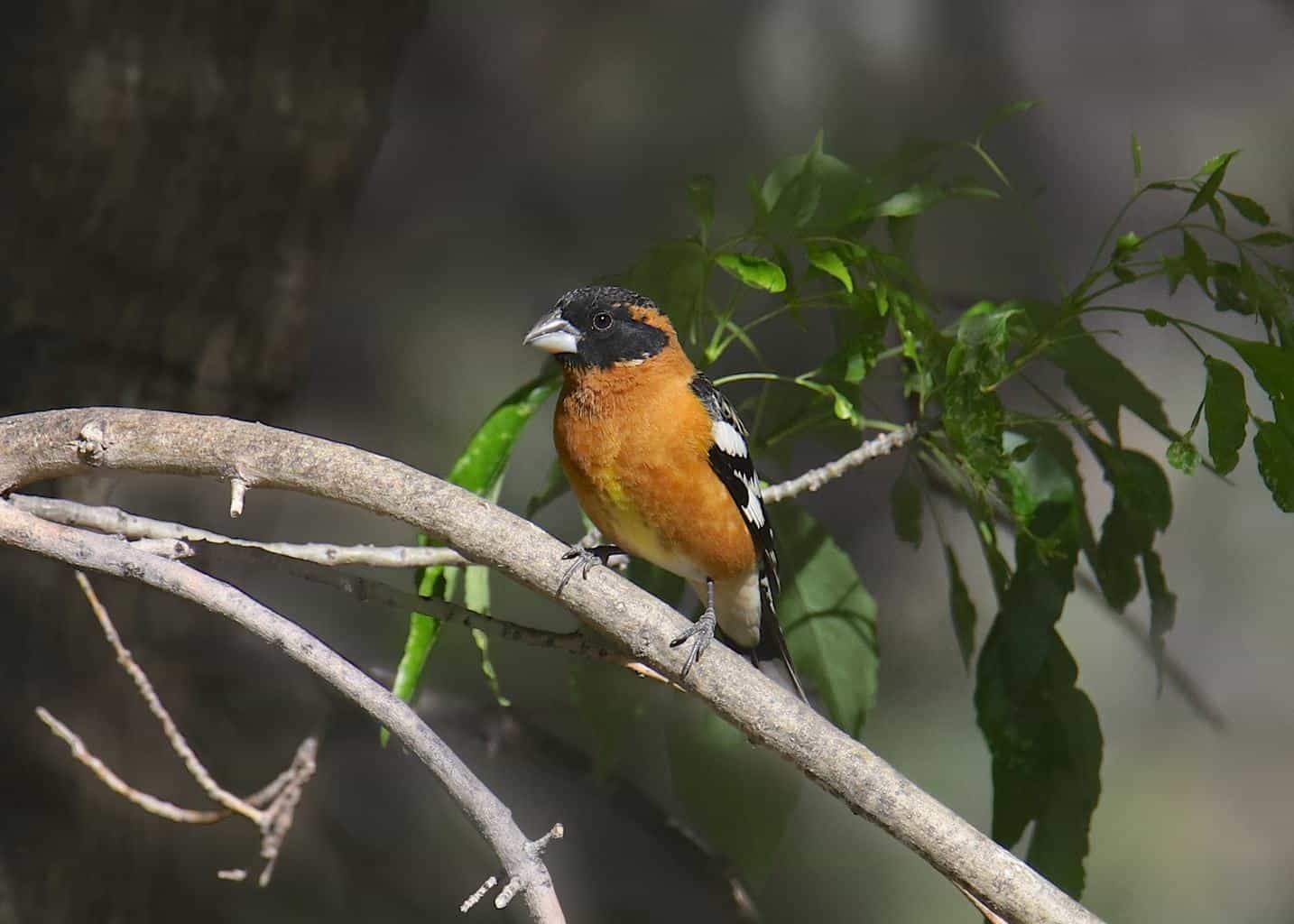
- Length: 7.1-7.5 in (18-19 cm)
- Weight: 1.2-1.7 oz (35-49 g)
- Wingspan: 12.6 in (32 cm)
The males of this species are black, white, and cinnamon orange in color, while the females are somewhat less flamboyant.
Black-headed grosbeaks feature a conical bill, but the similar Baltimore orioles’ bill is sharp and pointed. These black birds have rounded wings and medium-length tails.
While Baltimore orioles are completely black above, black-headed grosbeaks have yellowish-orange on their necks. They also have rounded tails, and their upper body has bright colors.
Their chunky body has a color pattern and white belly with white stripes.
Eastern Meadowlark
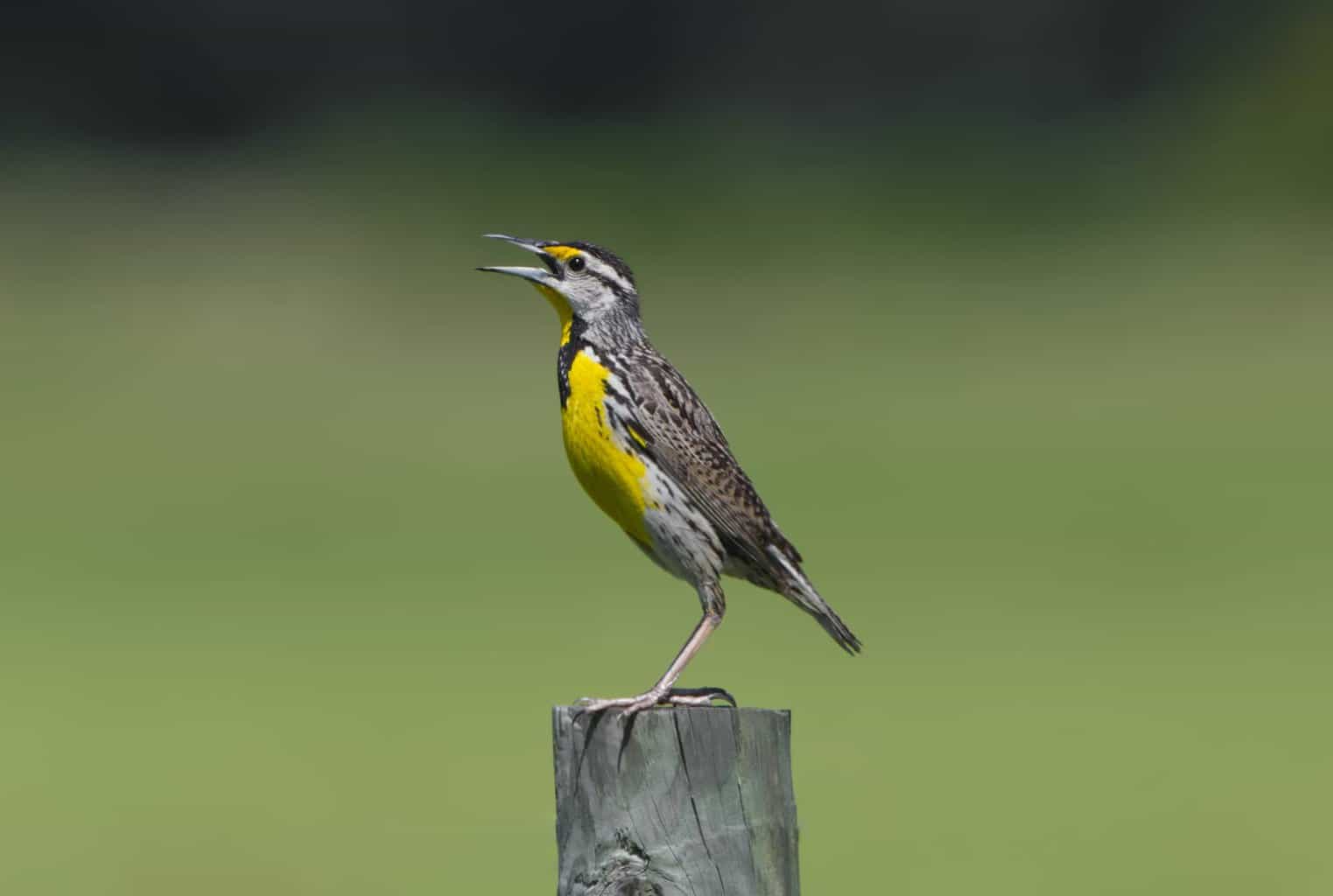
- Length: 7.5-10.2 in (19-26 cm)
- Weight: 3.2-5.3 oz (90-150 g)
- Wingspan: 13.8-15.8 in (35-40 cm)
Eastern Meadowlarks are chunky, medium-sized songbirds with short tails and long, spear-like bills.
They sometimes resemble female orioles in their yellow breast coloring and might occasionally be mistaken for them, but they have pale brown backs mottled with black and bold black Vs across their chests.
Eastern Towhee

- Length: 6.8-8.2 in (17.3-20.8 cm)
- Weight: 1.1-1.8 oz (32-52 g)
- Wingspan: 7.9-11.0 in (20-28 cm)
This large sparrow of the eastern US has striking plumage in warm reddish brown and bold black hues, with white tail corners while in flight. The female is more brown than black, also with a rufous belly.
Spotted Towhee
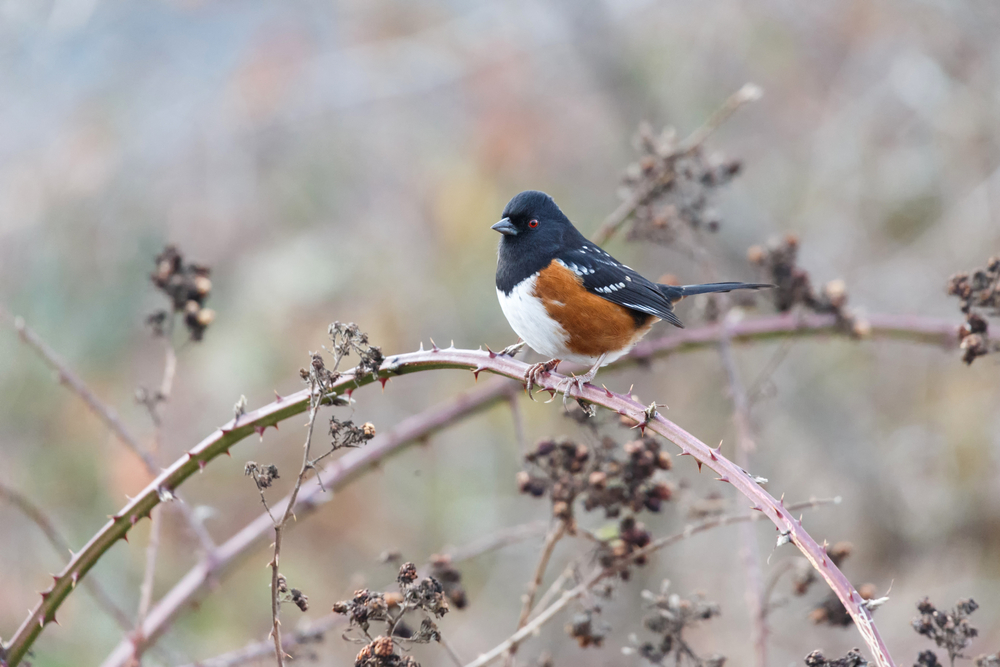
- Length: 6.7-8.3 in (17-21 cm)
- Weight: 1.2-1.7 oz (33-49 g)
- Wingspan: 11.0 in (28 cm)
The spotted towhee of the western US is found in sun-baked thickets. The males are gleaming black above, spotted and striped with brilliant white, with rufous orange flanks. The females are grayish brown.
Varied Thrush
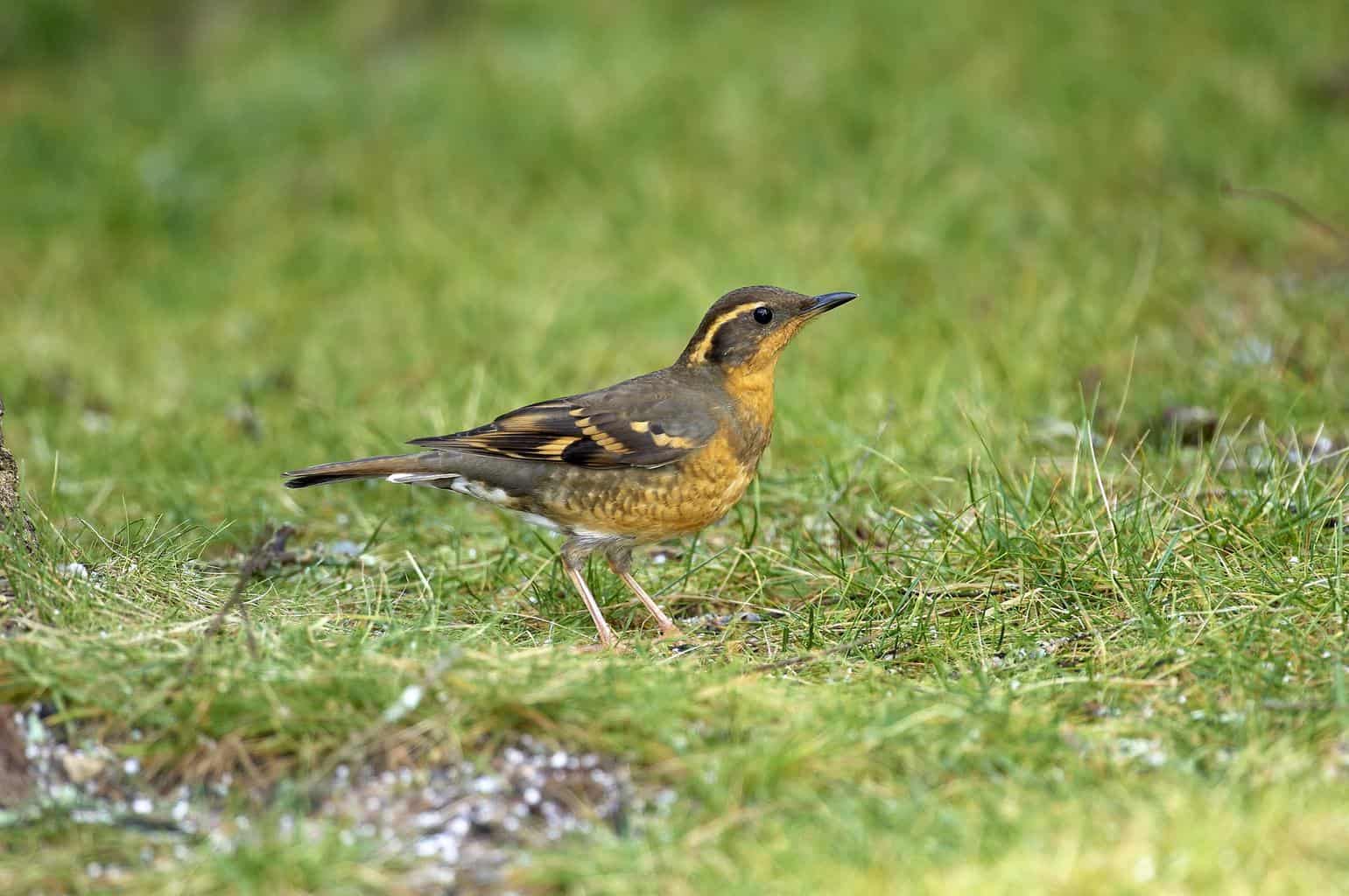
- Length: 7.5-10.2 in (19-26 cm)
- Weight: 2.3-3.5 oz (65-100 g)
- Wingspan: 13.4-15.0 in (34-38 cm)
This bird of the Pacific Northwest has a slate-gray (or brownish in the females and immature birds) back, breast band, and a burnt-orange breast and belly.
Western Meadowlark
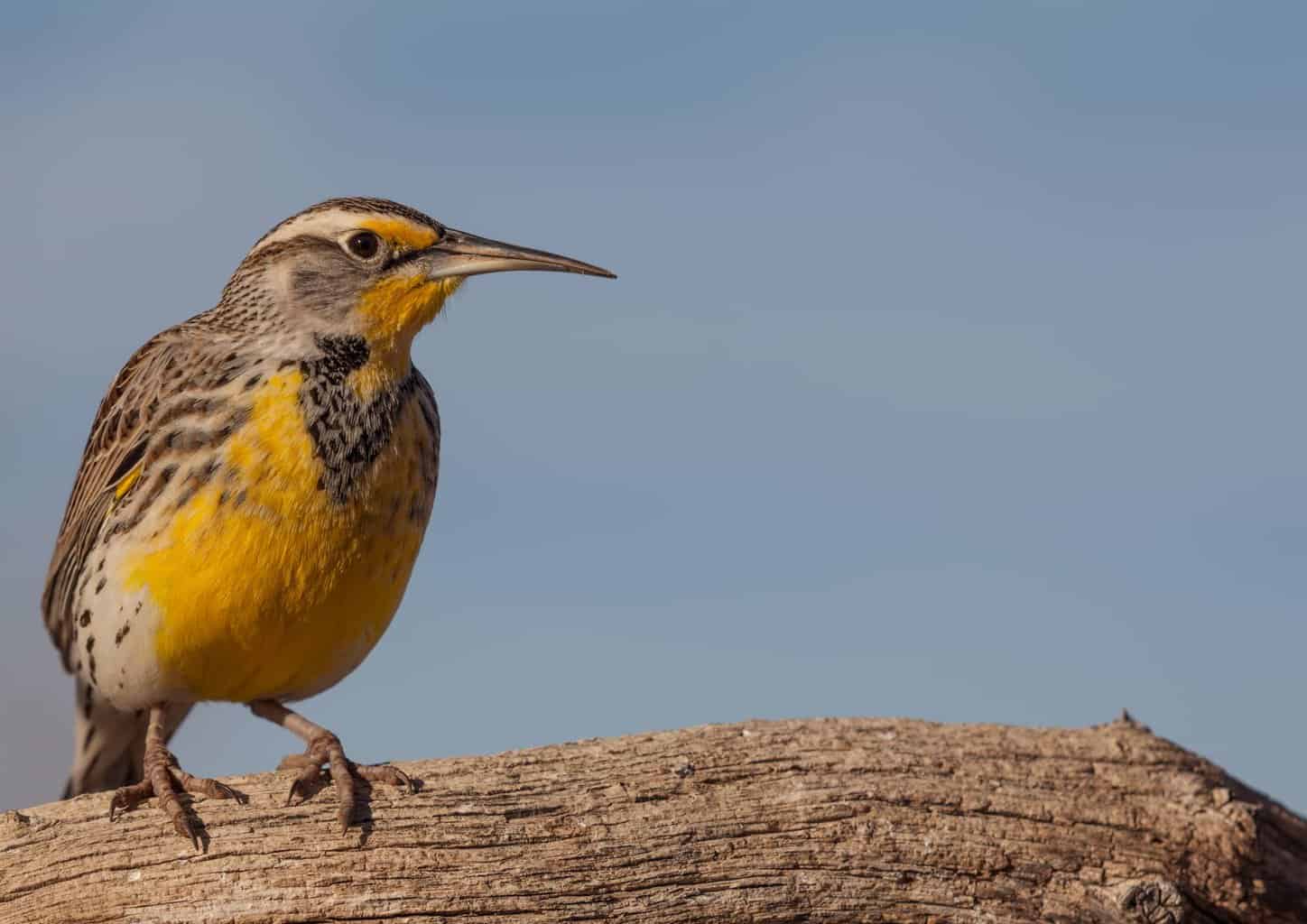
- Length: 6.3-10.2 in (16-26 cm)
- Weight: 3.1-4.1 oz (89-115 g)
- Wingspan: 16.1 in (41 cm)
Western meadowlarks have bright yellow chests with a black, V-shaped band, which turn gray in the winter. On their backs, heads and wings, they are brown and white.
They are very, very similar in appearance to eastern meadowlarks and so similar in appearance to some female orioles too.
Western Tanager
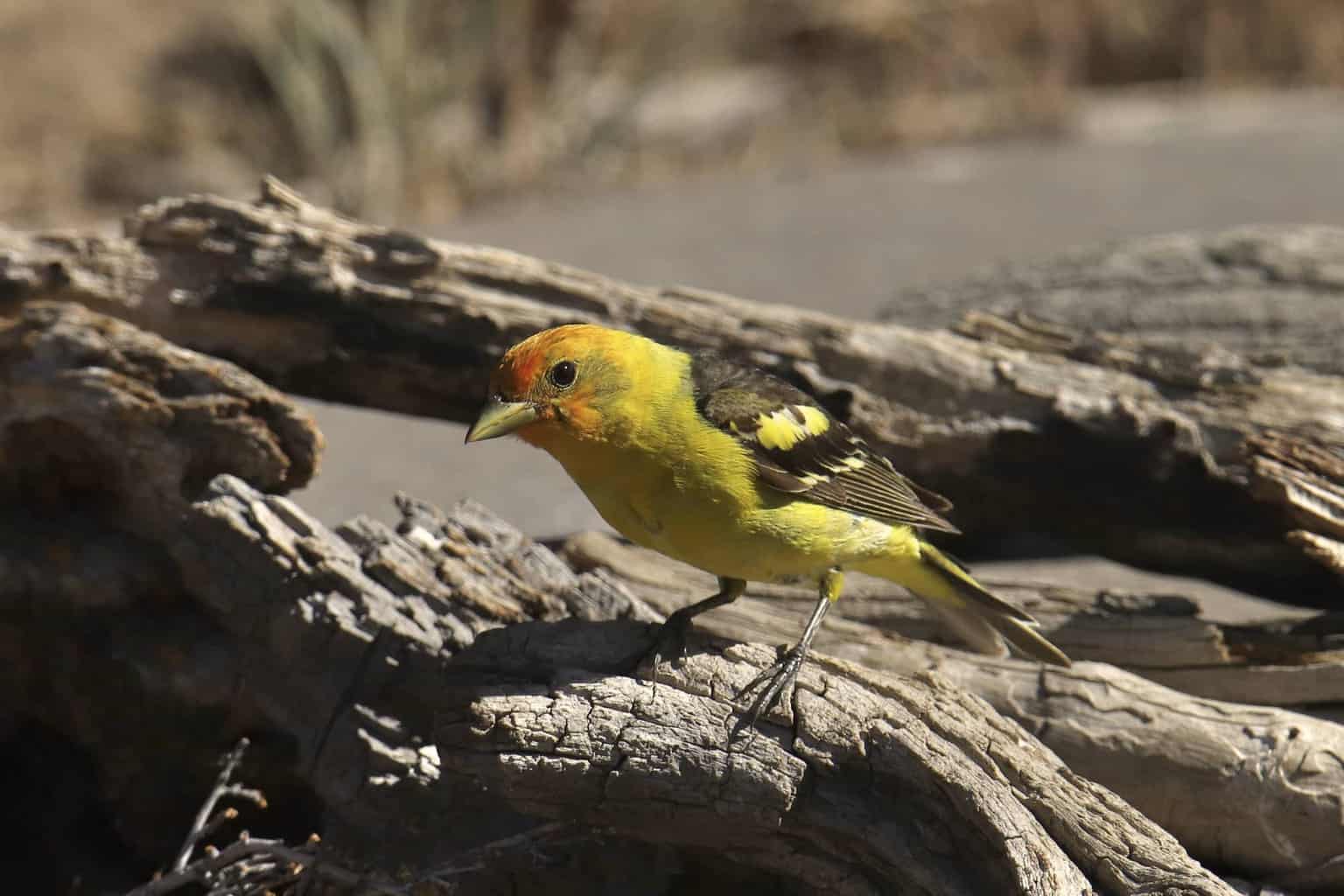
- Length: 6.3-7.5 in (16-19 cm)
- Weight: 0.8-1.3 oz (24-36 g)
- Wingspan: 11.5 in (29 cm)
The western tanager of western North America is another bird occasionally confused with orioles. The males have red-orange heads along with yellow bodies and coal-black wings.
Females and immatures are somewhat duller yellow-green and black in hue. The females of other tanagers may sometimes be confused with orioles by garden birdwatchers, looking out for yellow and orange hues.
One point of difference is that Bullock’s orioles have thinner and pointier bills than female western tanagers, so this is one way to tell these birds apart.
Orioles resemble many different birds, depending on the species, sex, and growth stage. So any list can only ever be a starting point.
The key to correctly identifying birds begins with identifying the species you are likely to see in your area and trying to find out as much about them as possible.
Perhaps, with the list above, you will at least have been able to make a start toward becoming more adept in bird identification.

